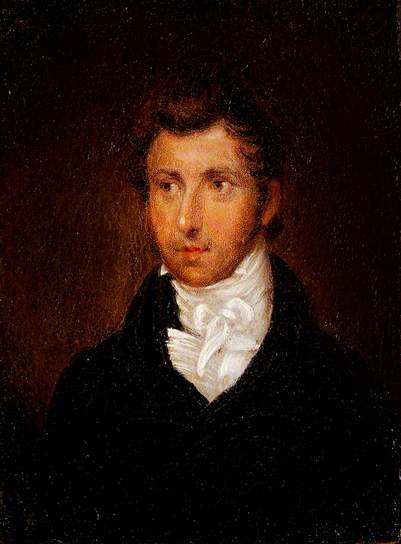Joseph Arnold (1782-1818)
Details
Type of entity: Person
Name: Joseph Arnold
Date of birth: 1782
Date of death: 1818
Source of information: Special Collections
Possible others
Profile

Copyright: Beccles and District Museum
Joseph Arnold was born in Beccles, Suffolk, on 28th December 1782. His father was a wealthy tanner and he attended the local grammar school. At the age of 16, he was apprenticed to a surgeon and apothecary and at the same time, arrangements were made for a private tutor in the classics. He then proceeded to study medicine in Edinburgh and received his M.D. in 1807.
Unable to obtain any other employment as a doctor, he was advised to become a naval surgeon. He engaged initially in 1808 as an assistant surgeon on HMS Victory, but was promoted the following year to become surgeon on HMS Hindostan. A journey to Sydney, Australia followed, during which he made the acquaintance of Lachlan Macquarie, who was travelling out as the newly appointed Governor of New South Wales. Arnold subsequently served on various ships including HMS Hibernia, HMS America and HMS Alcmene, mainly in the Mediterranean and the Adriatic.
When hostilities ceased in 1814, Arnold succeeded in obtaining appointment to the Northampton for a voyage transporting 110 female convicts to New South Wales. This was the first time that a surgeon-superintendent had been appointed to a convict transport, and followed the notorious voyages of the General Hewitt and the Surry in 1813/1814 which had seen very high mortality rates. It was while in London, waiting for the Northampton to sail, that Arnold seems to have acquired his copy of Petrarch’s Latin works.
As well as providing work, this voyage also provided Arnold an excellent opportunity to pursue his interest in natural history and to collect specimens in a land whose fauna and flora were still largely unknown. He hoped to practise medicine in Sydney and approached Governor Macquarie for assistance with this plan, but was rebuffed. So, in July 1815, Arnold embarked on the Indefatigable to return to England. Tthey had only reached Batavia (present-day Jakarta) when the Indefatigable was completely destroyed by fire. Arnold lost many of his possessions, including all the specimens he had collected from South America, Australia and Indonesia during this trip. It was while he was stranded in Java that Arnold became friendly with the governor, Sir Stamford Raffles.
Upon his return to England in 1816, Arnold returned to Suffolk, where he stayed with his brother while trying to find a way to travel abroad once more and continue his study of natural history. When Sir Stamford Raffles was appointed governor of Sumatra in 1817, an opportunity presented itself and Arnold travelled to Sumatra in an official capacity as naturalist. Unfortunately he was there for only 4 months before he succumbed to a fever contracted on an expedition into the interior. He died on 26th July 1818.
Although Arnold did publish papers on his medical work, his more significant scientific contribution was as a naturalist - part of a generation that collected, described and catalogued specimens from around the world, and particularly from the recently discovered Antipodes. During his last expedition in Sumatra, a specimen was collected of the Corpse Flower, which is generally acknowledged to be the largest individual flower produced by any plant, typically reaching over one metre in diameter. Before his death, Arnold had begun to draw it; that drawing was completed by Lady Raffles and sent back to London, followed by a full botanical description. In 1820, the species was officially named Rafflesia arnoldii, commemorating the role of both Sir Stamford Raffles and of Joseph Arnold in its discovery.

